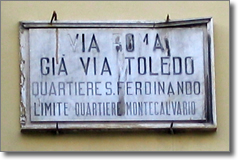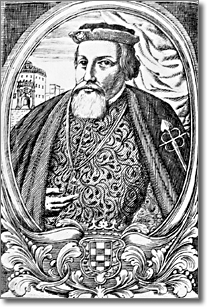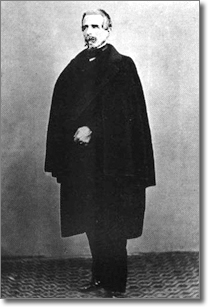


Rome, morning of 20 September 1870: heavy cannon fire managed to open a gap in the Aurelian Walls. Cavalrymen and Infantrymen from Vittorio Emanuele II's army broke through and entered the city. They took control of the city, ending the Pope's temporary reign. Rome was finally reunited with the rest of Italy and the ballot of 2nd October sanctioned its annexing.
Naples was jubilant too and the City Council joined in the celebration as they saw the reunification as the fulfilment of the National Risorgimento. On 10 October the then mayor of the city, Paolo Emilio Imbriani, proposed changing the name of the old street, via Toledo, and renaming it via Roma instead.
The idea immediately led to a split assembly, with half in favour and half against. Via Toledo had been known as such for 334 years because it was opened in 1536 by the Viceroy, don Pedro Alvarez de Toledo, Marques of Villafranca. He maybe never imagined that it would become the most important and characteristic street in the city.
The debate grew bitter. There were those people who wanted to keep the historic name but their opponents saw the old name as a reminder of a period of foreign rule in the city. The mayor could not fail to recognise the role played by the Spanish Viceroy even if his proposal would consign his name to anonymity.

To solve the problem, they decided to call the street "via Roma ex via Toledo". This solution may have been enough to calm tempers at the Townhall but it was going to take more than this to convince the townspeople who were set on returning to the old name.
A pro "via Toledo" committee was set up and the press followed - and at times fanned - the heated debate. Some famous people got involved including the well-known historian Bartolommeo Papasso, who became a staunch opponent of the new title.
It was all a waste of time, the decision had been made. New street signs were made to replace the old ones but since there was still a lot of hostility it was decided to get the municipal guards to put them up during the night. The traditionalist faction couldn't resist using satire against the Mayor and a little rhyme started to be heard around the city which went like this:
"Un detto antico, e proverbio si noma,
dice: tutte le vie menano a Roma;
Imbriani, la tua molto diversa,
non mena a Roma ma mena ad Aversa * "
(There is an old saying that goes; all roads lead to Rome; but, Imbriani, yours is different, because yours leads to Aversa not Rome" )
Paolo Emilio Imbriani only continued as Mayor for a few months afterwards but his decision left such a mark that even on his death in 1877 the person who delivered the speech at his funeral felt obliged to defend his patriotic but impulsive change of street name.
* in 1813 the Royal House for Madmen opened its doors, the first lunatic asylum in Italy.
Area Cultura e Turismo Servizio Beni Culturali - Archivio Storico Municipale
Salita Pontenuovo, 31 - 80139 Napoli
e-mail: archivi.storici.biblioteche@comune.napoli.it
pec: archivi.biblioteche@pec.comune.napoli.it
Accetto la cookie policyContinuando ad utilizzare questo sito l'utente acconsente all'utilizzo dei cookie sul browser come descritto nella nostra cookie policy, a meno che non siano stati disattivati. È possibile modificare le impostazioni dei cookie nelle impostazioni del browser, ma parti del sito potrebbero non funzionare correttamente. visualizza la cookie policy
Accept